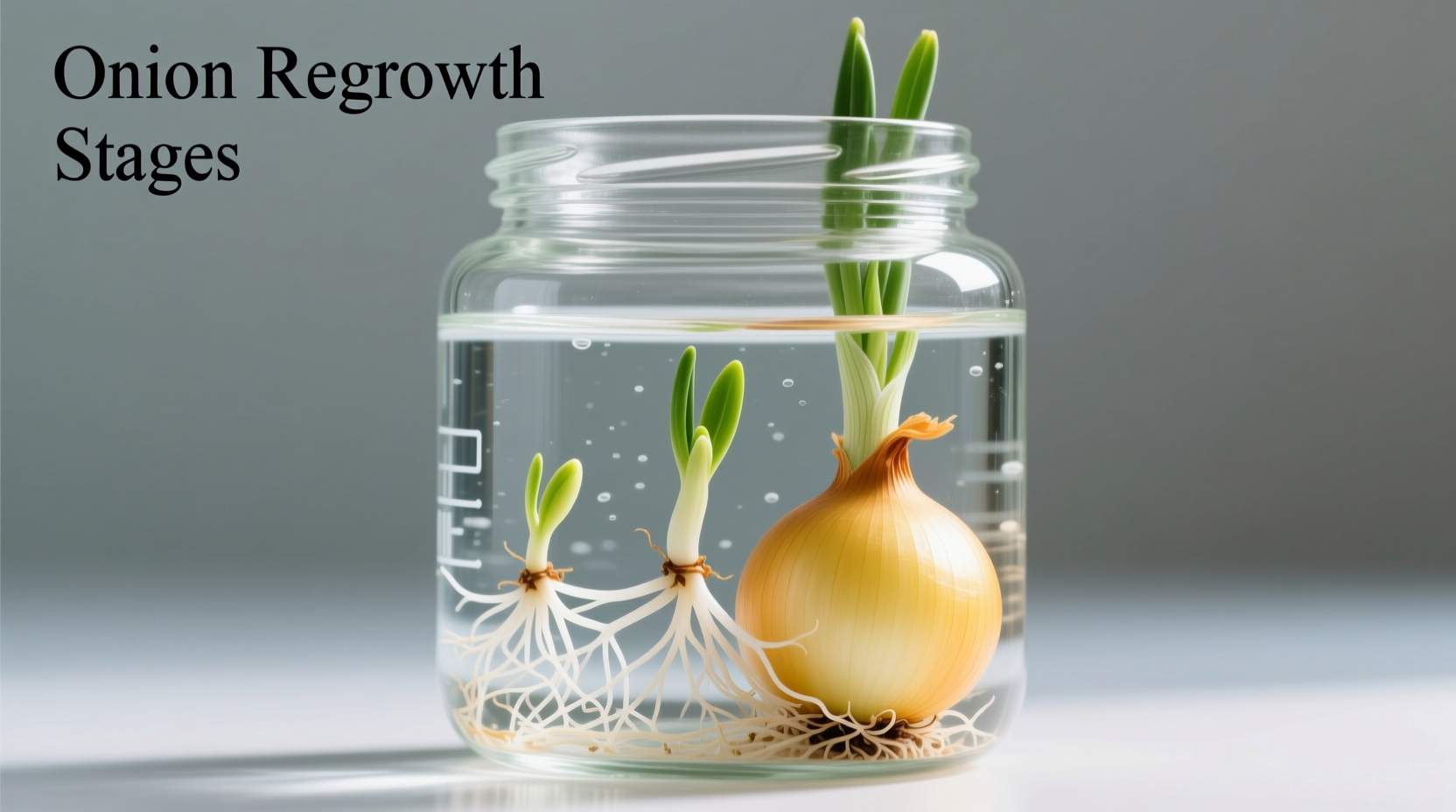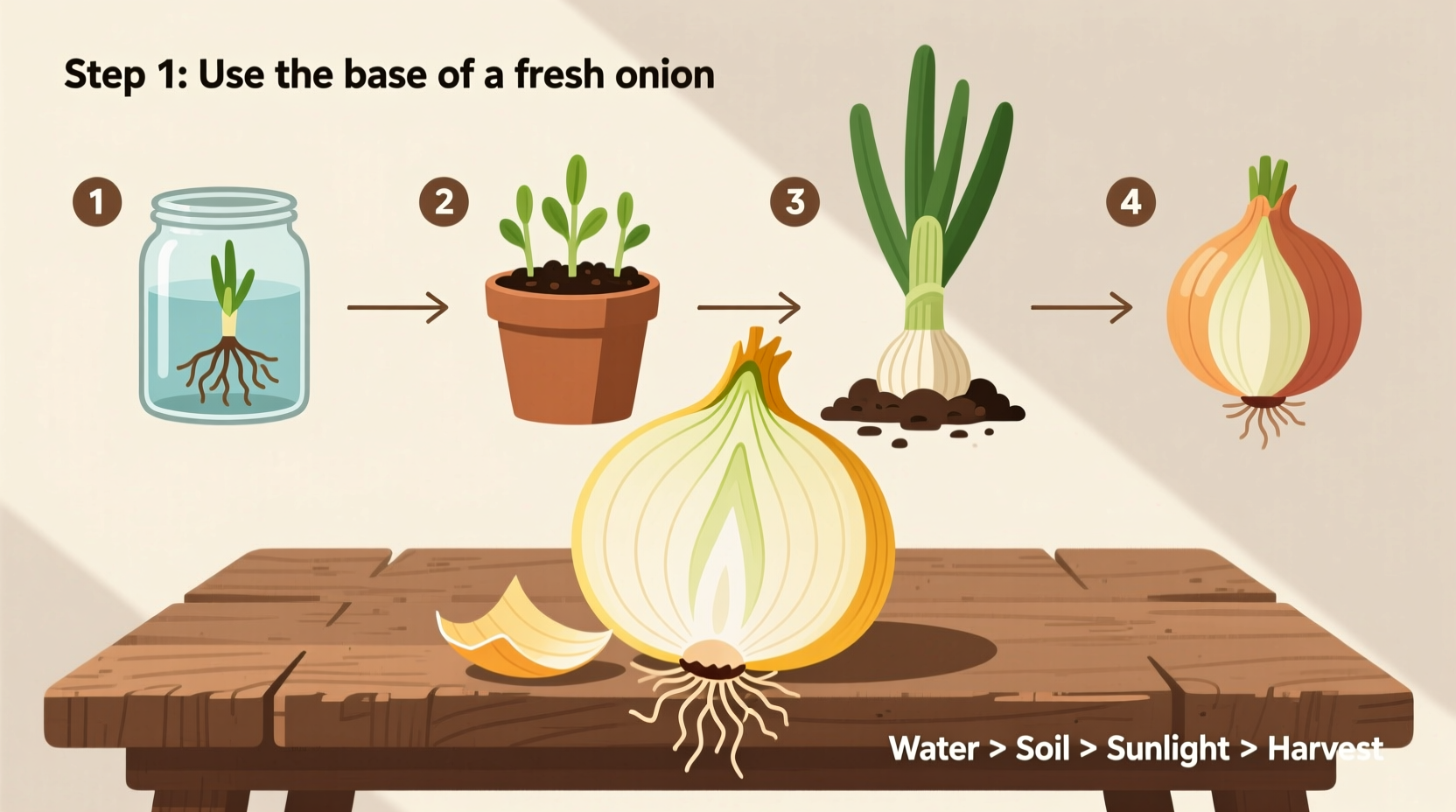Yes, you can successfully grow new onion greens from an onion bottom in just 7-10 days using water or soil propagation. While you won't get a full-sized bulb, you'll harvest fresh green onion tops for cooking within weeks. The root end (1-2 inches) with intact roots is essential for regrowth.
Why Growing Onions from Scraps Makes Kitchen Gardening Simple
Transforming onion scraps into fresh greens is one of the easiest kitchen gardening projects you can start today. Unlike growing onions from seeds which takes 100-175 days, regrowing from scraps delivers usable greens in weeks with minimal effort. This zero-waste technique works because onions store energy in their bulb layers, allowing the root end to regenerate when given proper conditions.
Your Onion Regrowth Starter Kit: What You'll Need
Before beginning, gather these simple supplies:
- Onion bottoms (1-2 inch root sections with roots intact)
- Shallow container or jar
- Water or potting soil
- Sunny windowsill (6+ hours of light)
- Scissors for harvesting
| Method | Time to First Greens | Harvest Potential | Best For |
|---|---|---|---|
| Water Propagation | 5-7 days | Limited harvests (2-3 cuttings) | Quick kitchen supply |
| Soil Propagation | 7-10 days | Multiple harvests (4-6 weeks) | Sustained production |
Step-by-Step: Growing Onion Greens in 4 Simple Phases
Phase 1: Preparing Your Onion Base (Day 0)
Cut 1-2 inches from the root end of any onion (yellow, red, or white varieties work). Ensure the root plate remains intact with visible root nubs. Remove any loose outer layers but preserve the inner concentric rings. This preparation method follows recommendations from the University of Minnesota Extension's home gardening program which confirms that preserving the meristematic tissue in the basal plate is crucial for successful regeneration (extension.umn.edu/vegetables/growing-onions).
Phase 2: Choosing Your Growing Medium
Water Method: Place the onion base in a small container with the root end submerged 1/4 inch in water. Change water every 2-3 days to prevent bacterial growth. This method works well for quick kitchen supply but produces less robust growth.
Soil Method: Plant the onion base 1 inch deep in potting mix with the flat root end down. Water thoroughly and maintain consistent moisture. Soil propagation yields stronger, more sustainable growth as confirmed by Cornell University's gardening resources which note that soil provides essential nutrients for continued production (gardening.cce.cornell.edu).

Phase 3: Monitoring Growth (Days 3-14)
Within 3-5 days, you'll notice white roots extending into the water or soil. Green shoots will emerge from the center within 7-10 days. Position your container in bright, indirect light - onions require 6+ hours of daily light for optimal growth. During this critical development phase, maintain consistent moisture without waterlogging. The USDA National Institute of Food and Agriculture notes that Allium species like onions respond best to consistent moisture levels during initial regrowth stages.
Phase 4: Harvesting and Maintenance
When greens reach 6-8 inches tall (typically 2-3 weeks), harvest by cutting 1-2 inches above the bulb using clean scissors. This allows continued growth for multiple harvests. Never remove more than 1/3 of the green growth at once to maintain plant health. For soil-grown onions, apply a balanced liquid fertilizer every 2-3 weeks to sustain production.
Realistic Expectations: What You Will (and Won't) Grow
It's important to understand the limitations of this method. While you'll successfully grow fresh green onion tops, you won't develop a full-sized bulb. The energy stored in the original onion base supports leaf growth but isn't sufficient for bulb formation. This aligns with research from the Royal Horticultural Society which explains that complete bulb regeneration requires specific temperature fluctuations and longer growing periods not achievable through simple regrowth methods.
Troubleshooting Common Onion Regrowth Issues
- Yellowing tops: Usually indicates overwatering or poor drainage. Reduce water frequency.
- No growth after 10 days: The root plate may be damaged. Start with a fresh onion base.
- Mold on water surface: Change water more frequently and ensure only roots (not bulb) contact water.
- Thin, weak growth: Increase light exposure - onions need bright conditions for sturdy growth.
Maximizing Your Onion Regrowth Success
For continuous harvests, maintain 3-4 onion bases at different growth stages. When one plant's production slows (typically after 4-6 weeks), replace it with a new base. During summer months, you can transplant soil-grown onions to an outdoor garden for extended production. The University of California Master Gardener Program confirms that transplanted regrown onions often produce stronger growth when moved to garden conditions with proper spacing.











 浙公网安备
33010002000092号
浙公网安备
33010002000092号 浙B2-20120091-4
浙B2-20120091-4